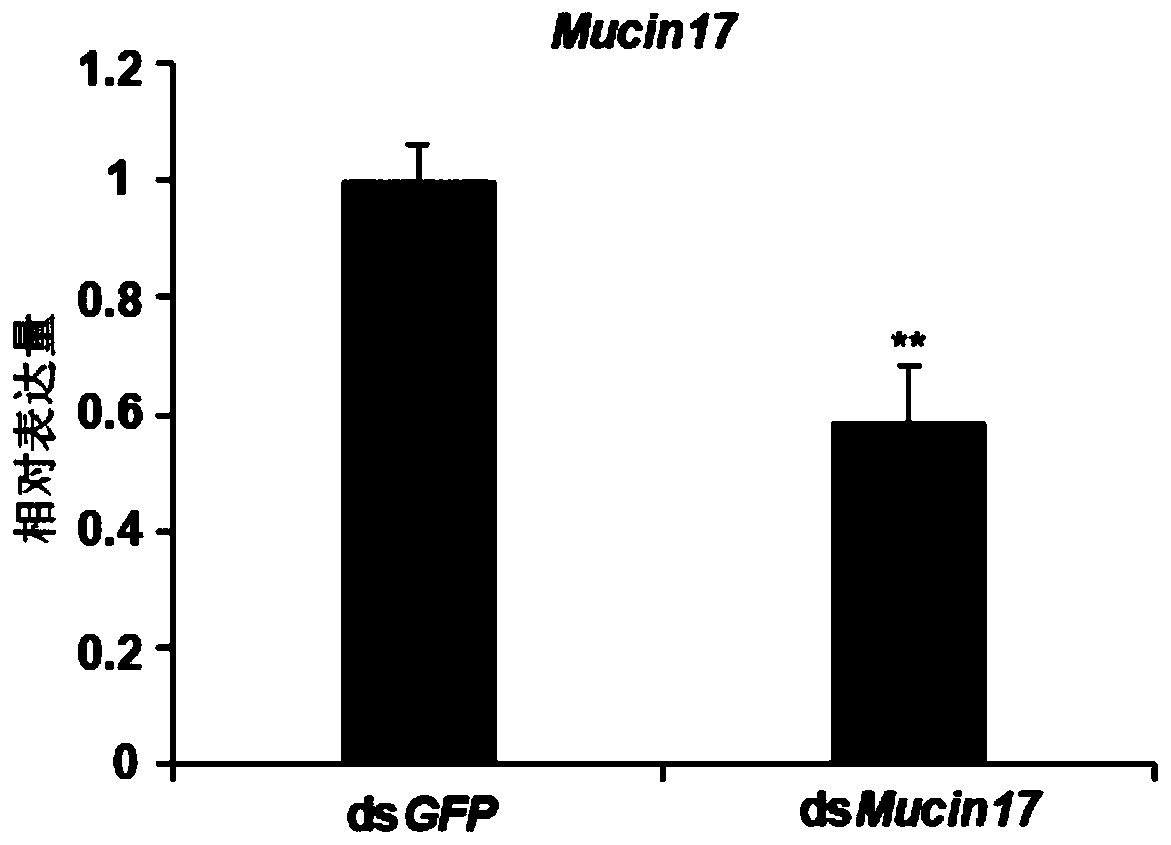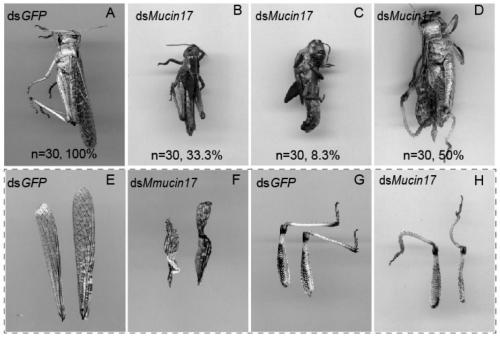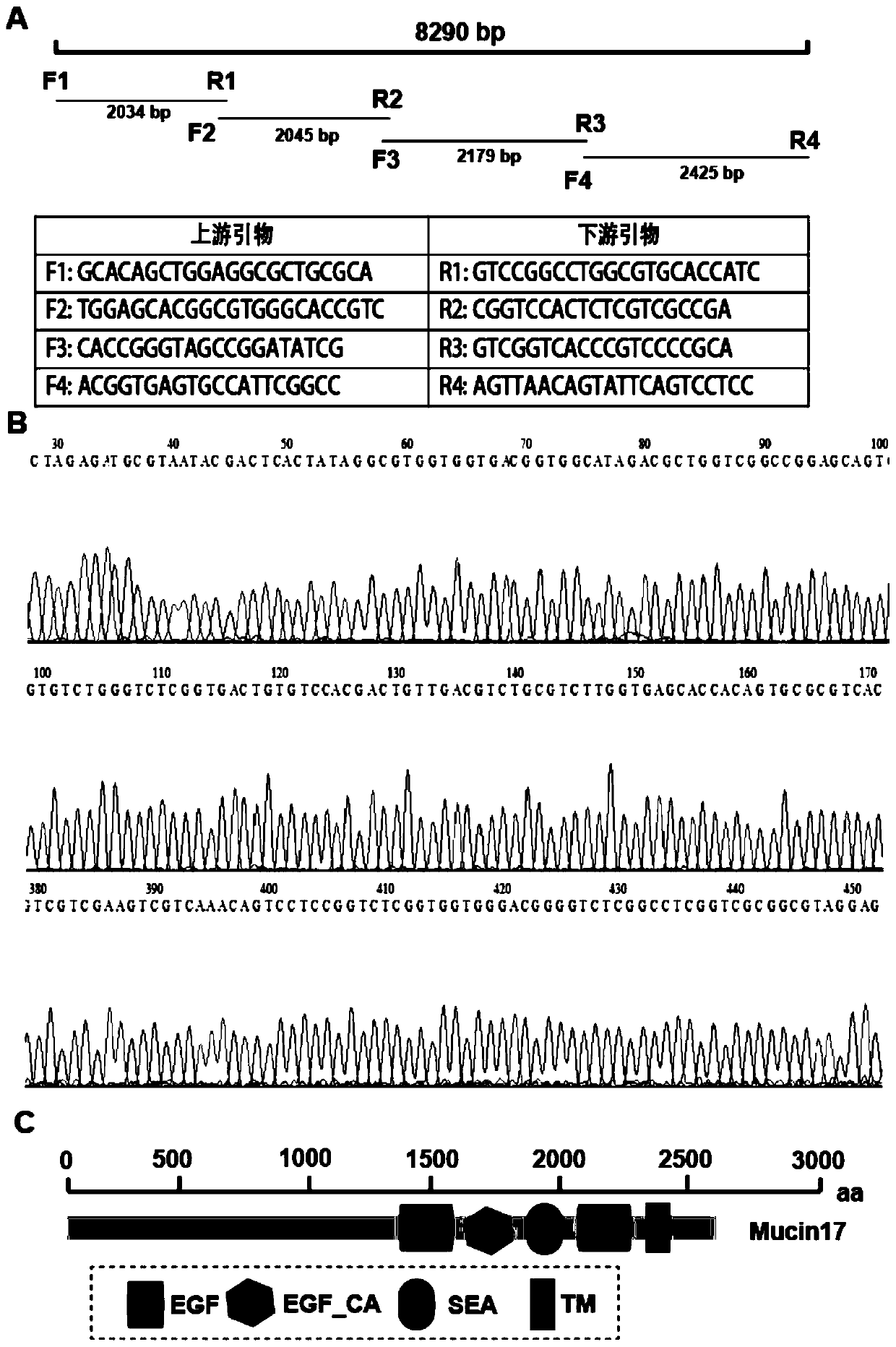Migratory locust Mucin17 and coding gene and application thereof
A technology of mucin and migratory locust, applied in the fields of application, genetic engineering, plant genetic improvement, etc., can solve problems such as environmental pollution, non-target biological hazards, drug resistance, etc., and achieve the effect of broad application prospects
- Summary
- Abstract
- Description
- Claims
- Application Information
AI Technical Summary
Problems solved by technology
Method used
Image
Examples
Embodiment 1
[0013] Embodiment 1: Acquisition of migratory locust mucin gene sequence
[0014] 1. Acquisition of the mucin gene sequence of migratory locusts
[0015] Based on the whole locust transcriptome database (GenBank accession number: GEZB00000000) obtained by our laboratory, the mucin gene (Mucin) of migratory locust was searched by bioinformatics method, and the partial sequence of mucin gene Mucin17 of migratory locust was obtained. The NCBI website was used to perform Blast analysis on the sequence, and at the same time combined with the genome sequence of migratory locust (GenBank accession number: AVCP000000000) to obtain its coding sequence, and after splicing and comparison using BioEdit software, the full-length open reading frame sequence of mucin gene Mucin17 of migratory locust was obtained . According to the obtained full-length open reading frame sequence of migratory locust mucin gene Mucin17, primer premier 5.0 software was used to design 4 pairs of upstream and do...
Embodiment 2
[0022] Embodiment 2: Migratory locust lethal experiment of mucin gene dsRNA
[0023] 1. Injection of migratory locust mucin gene dsRNA
[0024] Thirty 5th-instar and 2-day-old nymphs with healthy growth and uniform size were selected for the experiment. 5 μl (10 μg) of dsRNA of SEQ ID NO: 3 was gently injected with a 25 μl micro-syringe along the blood flow between the second and third abdominal segments of the lateral abdomen of the nymph. At the same time, 30 nymphs were selected as the control group. Inject the same volume and concentration of dsGFP into the control group. The injected migratory locusts were reared in a 30°C constant temperature biochemical incubator (light:dark time=14h:10h, temperature 30±2°C, humidity 60%), and fed fresh wheat seedlings and wheat bran every day.
[0025] 2. Detection of mucin gene silencing in migratory locusts
[0026]Nine nymphs were collected 24 hours after injection of dsGFP and dsRNA, and the wing bud tissue was dissected for to...
PUM
 Login to View More
Login to View More Abstract
Description
Claims
Application Information
 Login to View More
Login to View More - R&D
- Intellectual Property
- Life Sciences
- Materials
- Tech Scout
- Unparalleled Data Quality
- Higher Quality Content
- 60% Fewer Hallucinations
Browse by: Latest US Patents, China's latest patents, Technical Efficacy Thesaurus, Application Domain, Technology Topic, Popular Technical Reports.
© 2025 PatSnap. All rights reserved.Legal|Privacy policy|Modern Slavery Act Transparency Statement|Sitemap|About US| Contact US: help@patsnap.com



